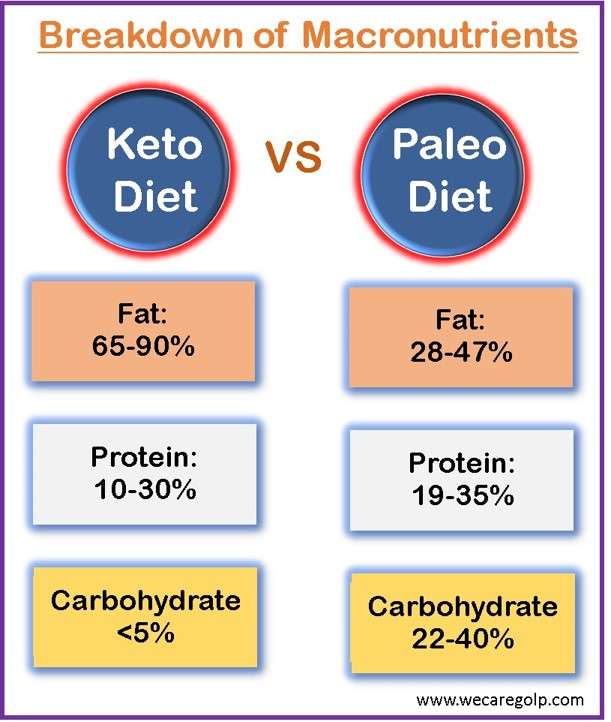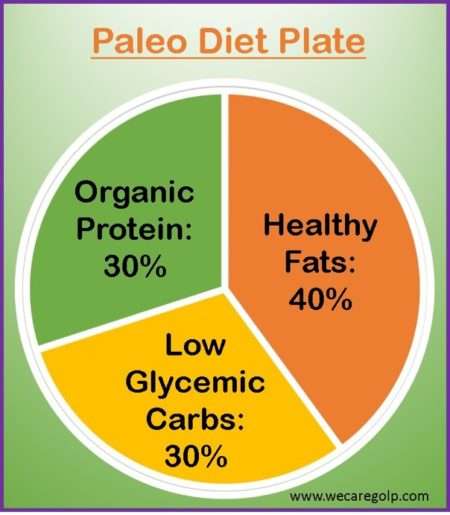Introduction
A paleo diet is also known as the Paleolithic diet, caveman diet, and Stone-age diet. It is the dietary pattern centered on the consumption of wild foods which were widely consumed during the Paleolithic era.
- It focuses on increased consumption of lean meat, fish, shellfish, fruit, vegetables, eggs, nuts, and seeds.
- The basis behind the diet is that modern foods that resulted from the changes in farming methods are genetically incompatible with the human body.
- This diet aims to replicate the hunter-gatherer diet that our ancestors followed thousands of years ago.
- This diet focuses on the true ways that our ancestors ate and eliminates all processed foods. They only focus on whole foods and keeping it simple.
- It is an eating plan in which one can eat any amount of lean meat, poultry, seafood, fresh fruits, and vegetables.
- It is a low-carbohydrate and high-protein diet. It is also high in fiber, minerals, and vitamins.
- It is poor in calcium and vitamin D as dairy products are not included.
- This diet causes stress on the kidneys and is unsuitable for long-term use.
- Some believe it is suitable as an ergogenic diet for athletes.
- Studies have concluded that adherence to the paleo diet improved fat quality and was associated with improved triglyceride levels independent of weight loss in people with type 2 diabetes.
- Furthermore, studies suggested that this diet has beneficial effects on body weight, waist circumference, systolic blood pressure, and triglycerides.
- Numerous studies suggested that it may be beneficial in the prevention of various health outcomes, including metabolic syndrome, type 2 diabetes mellitus, obesity, cardiovascular disease, and cancer.
- However, conclusions are not clear due to the limited studies with a large sample size conducted over a long period of time.
Components of Paleo Nutrition
| Nutrients | Amount |
| Protein | High (19-35%) |
| Carbohydrate | Moderate (22-40%) |
| Total fat | Moderate (28-47%) |
| Polyunsaturated fat | Moderate |
| Saturated fat | Moderate |
| Monounsaturated fat | High |
| Omega 3 fat | High |
| Total fiber | High |
| Fruits and vegetables | High |
| Nuts and seeds | Moderate |
| Salt | Low |
| Refined sugars | Low |
| Dairy foods | None |
Purposes of the Paleo Diet
- To lose weight or maintain a healthy weight
- To lessen the risk of heart disease.
- To improve digestive health by avoiding food types that our bodies find difficult to digest.
Rule of the the Paleo Diet
Foods allowed to eat in a paleo diet include
- Non-starchy vegetables
- Fruits
- Seeds
- Nuts (excluding peanuts)
- Animal-based products (lean meats)
- Fish, especially those rich in omega-3 fatty acids, such as salmon and mackerel
- Eggs
- Fruits and nuts-based oils for example coconut oil, olive oil, avocado oil, flaxseed oil
Foods that are not allowed in the paleo diet include
- Grains, bread
- Legumes, such as beans, lentils
- Extracted seed oils
- Added salt
- Starchy vegetables, such as corn, peas, and white potatoes
- Dairy products, such as milk and cheese
- Refined and processed foods such as chips or cookies
- Sugars
- Candy bars
- Sweet fruits, juices
Types of the Paleo Diet
There are many types of paleo nutrition. Three common types are given below. All of them emphasize on eating meats, seafood, fruits, vegetables, nuts, and seeds. However, there are subtle differences between the three diets.
- Primal paleo diet: White rice, dark chocolate, fermented dairy products, raw honey, and maple syrup as well as certain alcoholic beverages are permitted.
- Normal paleo diet: Dark chocolate, ghee butter, raw honey, maple syrup, and wine are permitted.
- Strict paleo diet: This does not allow any of the above foods but allows wine and grass-fed butter.
Advantages
- Foods that are highly processed or contain artificial additives and coloring are discouraged.
- It helps in weight management.
- It improves satiety.
- Consequently, it has several health benefits including blood sugar, insulin sensitivity, and blood pressure regulation; inflammation reduction; body fat and cholesterol balance; and immune system improvement. This is the result of plenty of fruits and vegetables high in fiber, potassium, and antioxidants and low in simple carbohydrates, sodium, and sugar.
Disadvantages
- Fresh foods such as fresh meat, and vegetables are more expensive than processed foods (frozen, canned foods)
- Many studies have revealed that increased consumption of red meat contributes to a higher risk of cardiovascular disease, diabetes, and even death.
- Due to the diet’s reliance on fresh foods, planning, shopping, preparing, and cooking meals will take some time. For people with busy schedules or less cooking experience, this may be difficult.
- The entire categories of frequently consumed foods, such as whole grains and dairy are excluded. This may raise the risk of deficiencies such as calcium, vitamin D, magnesium, B vitamins, and fiber deficiency.
- Since, legumes constitute a significant source of protein for vegetarians and vegans, it is nearly impossible for them to live healthy lives.
Health benefits of the Paleo Diet
- Improves heart health. The primary means by which it lowers the risk of cardiovascular disease is to eat fewer processed foods and more fruits and vegetables.
- Increases insulin sensitivity.
- Maintains blood pressure. Fruits and vegetables are rich in potassium.
- Helps in muscle development. Increased consumption of animal protein plays a vital role in muscle development.
- Helps in weight loss. It is low in carbohydrates as it does not allow grains that require processing. It also excludes processed foods.
Health risks of the Paleo Diet
- For most people, it is very challenging to maintain any diet that is overly restrictive in terms of one or more food groups. The paleo diet is therefore ineffective for maintaining a healthy weight.
- On the paleo diet, eating more protein from animal sources leads to a lot of saturated fat. In general, it is adverse to your health. Heart disease risk could rise as a result of this.
- Lack of calcium raises the risk of osteoporosis, rickets, and bone fractures along with Vitamin D deficiency.
- A persistent low-carbohydrate diet may result in ketosis, which occurs when too much fat is used as fuel.
- With the limited research on the short-term and long-term effects of the paleo diet, there is no information on how this diet affects the elderly, pregnant women, or children. People with diabetes, heart disease, inflammatory bowel disease, or any combination of these diseases must consult with a medical doctor or dietician to ensure if the paleo diet is the best choice.
Tips for the Paleo Diet
- Understand the concept of the paleo diet before starting it.
- Make a list of allowed foods and foods to be avoided.
- Stay away from highly processed foods.
- Choosing if one can adhere to the paleo diet requirement is the first step in getting started.
- Since it will be difficult to remove the entire group of items from the plate, make a gradual shift rather than leaping right in.
- The transition to the Paleo diet can be difficult at first. Give some time to adjust to the changes and be open to learning.
- Plan for challenges. Eating out can be difficult, so make sure to carry your own meals.
- Eat a relatively high amount of animal protein.
- Contrary to most modern diets, eat lots of fruits and vegetables for good carbohydrates instead of grains, starchy tubers, or refined sugars.
- Eat a large amount of fiber from non-starchy fruits and vegetables.
- Eat a moderate amount of fat, with a lot more good (monounsaturated and polyunsaturated) fats than bad (trans and certain saturated) fats.
- Eat foods with a high potassium content and a low sodium content.
- Eat foods rich in plant phytochemicals, vitamins, minerals, and antioxidants.
- As a lot of carbohydrates are eliminated, it can be particularly dehydrating. Drink plenty of water.
- Experiment with new flavors.
- Read labels.
Contraindications of the Paleo Diet
- Heart disease
- Kidney damage
- Type 1 diabetes mellitus
Paleo Vs Keto Diet
- By adjusting macronutrients in the diet, the keto diet aims to get the body into ketosis.
- Ketosis is a natural metabolic state in which the body burns stored fat rather than carbohydrates to generate the energy needed to perform its normal functions.
- In other words, the keto diet is a diet that is intended to induce ketosis, or the breakdown of body fat into ketones, and allow the body to run primarily on ketones rather than glucose.
- The keto diet explicitly prohibits carbohydrates whereas the paleo diet allows them if they are obtained from whole food sources.
- The keto diet encourages the consumption of dairy products, such as full-fat milk, butter, and natural yogurt while they are not included in the paleo diet.
- Furthermore, the keto diet encourages the consumption of soy foods, such as tofu and soybeans. The paleo diet, on the other hand, forbids soy as it is classified as a legume.

Summary
- The hunter-gatherer diet that our ancestors followed thousands of years ago is the goal of the paleo diet. Researchers think that whole foods were a part of our ancestors’ diets, even though it is impossible to know exactly what they ate in different parts of the world.
- The paleo diet encourages people to consume nutrient-dense whole, fresh foods rather than highly processed foods with added salt, sugar, and harmful fats.
- However, avoiding whole grains, dairy, and legumes may result in insufficient nutrient intake.
- Due to the restrictive nature of the such diet, people find it difficult to stick to it over time. Several studies have found that following the paleo diet results in significant weight loss and health benefits.
- Even though the paleo diet can help in losing weight and is appropriate for those with dietary restrictions, it is highly recommended to consult a registered dietician or health care provider.
References
- Fitness expert. (2022, Nov. 23). Paleo Diet for Weight Loss. Right. https://blog.beright.app/paleo-diet-for-weight-loss/
- Coetzee, O., Filatova, D. (2016). Metabolic syndrome reversal through nutrition: A case report. Adv Integr Med, http://dx.doi.org/10.1016/j.aimed.2016.07.007
- Challa, H.J., Bandlamudi, M., Uppaluri, K.R. (2022, July 4). Paleolithic Diet. National Library of Medicine. https://www.ncbi.nlm.nih.gov/books/NBK482457/
- Martensson, A., Stomby, A., Tellström, A., Ryberg, M., Waling, M., Otten, J. (2021, March). Using a Paleo Ratio to Assess Adherence to Paleolithic Dietary Recommendations in a Randomized Controlled Trial of Individuals with Type 2 Diabetes. Nutrients, 13(3):969. https://DOI:10.3390/nu13030969
- Jönsson, T., Granfeldt, Y., Ahre´n, B., Branell, U., Palsson, G., Hansson, A., Söderström, M., Lindeberg, S. (2009). Beneficial effects of a Paleolithic diet on cardiovascular risk factors in type 2 diabetes: a randomized cross-over pilot study. Cardiovascular Diabetology, 8 (35). https://cardiab.biomedcentral.com/articles/10.1186/1475-2840-8-35
- Diet Review: Paleo Diet for Weight Loss.” The Nutrition Source, Harvard Chan School of Public Health. Retrieved January 07, 2023 from, https://www.hsph.harvard.edu/nutritionsource/healthy-weight/diet-reviews/paleo-diet/
- National University of Natural Medicine. (2019, April 10). The Paleo Diet: Pros and Cons According to NUNM. https://nunm.edu/2019/04/paleo-diet/
- Sports Medicine. (2016, April 2). Pros and Cons of the Paleo Diet. UPMC Health Beat. https://share.upmc.com/2016/04/pros-cons-paleo-diet/
- Cambeses-Franco, C., González-García, S., Feijoo, G., Moreira, M. T. (2021, August 10). Is the Paleo diet safe for health and the environment?. Science of The Total Environment, 781, 146717. https://doi.org/10.1016/j.scitotenv.2021.146717

